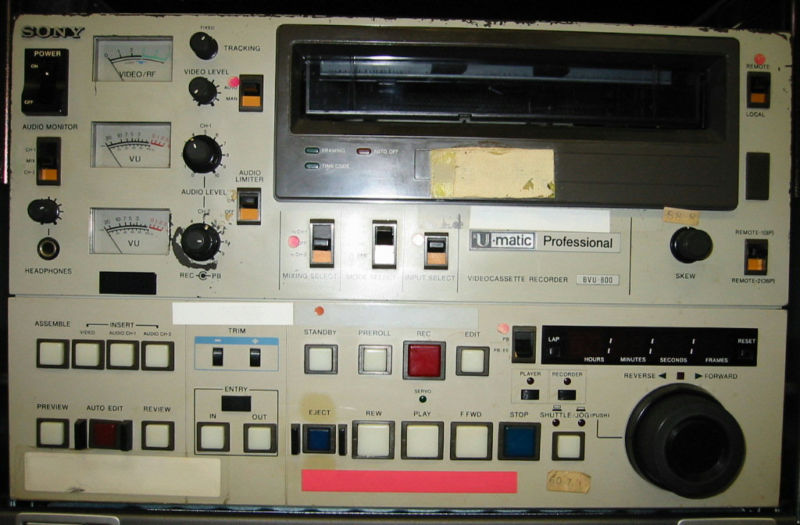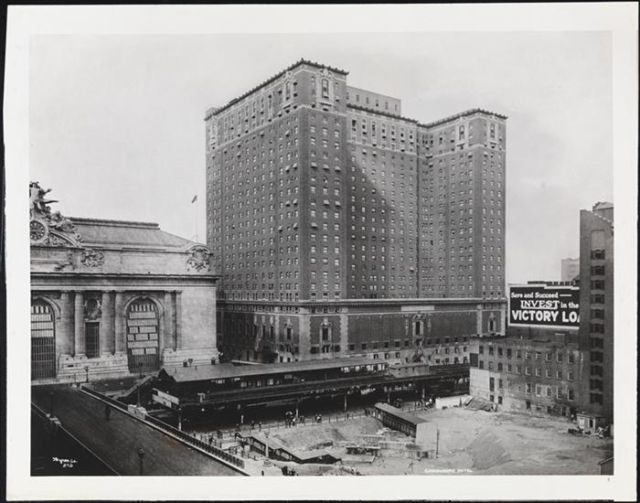
It’s the Sony U-Matic in all its analog glory. This device was used in the early 1970s to stream X-rated video to hotel rooms, often using a closed-circuit broadcasting device on the hotel roof.
In 1973, a young Roger Ebert reviewed the movie Deep Throat. He was not yet a household name or a Pulitzer Prize winner, but he was a respected film critic. The fact that he and his peers regularly reviewed pornographic films suggested that we’d entered a new era in film—an era in which pornography might be viewed as art.
Turns out that wasn’t the case. More than 40 years later, people are still arguing about whether porn can be art. But that doesn’t mean the early ’70s weren’t a turning point for porn. The year before Roger Ebert saw Deep Throat, the Hotel Commodore in New York City shocked the nation by announcing that it had installed a system which would let viewers watch X-rated titles in their hotel rooms. It might not be art, but porn had become a testing bed for new kinds of on-demand video technologies.
The United States was not the nation to lead the world into this new era. Japan got there first. Technology-friendly Osaka had hotels built specifically for many different combinations of sex and video. Some hotel rooms came equipped with video cameras, as well as, presumably, both an overworked technical staff and an overworked cleaning staff. Other rooms simply had a television that picked up the signal of a closed-circuit broadcasting device on the roof, creating an early form of streaming video. In 1971, one hotel’s device made contact with a steel safety railing. This considerably increased the broadcast range and gave surrounding houses a glimpse of movies that not everyone appreciated.
Scandalized reports about Osaka’s hotels made their way across the Pacific to Los Angeles. There, groups of entrepreneurs snapped up Japanese technology—namely the Sony U-matic machine—and made their own dirty little hotels with dirty little porn channels. This turned out to be a good deal both for the hotels and for Sony. The U-matic machines, which used cartridges to play different films, were too expensive for the consumer market. But they were worth it for motels, which could show the same few films over and over.
The motels, meanwhile, were explicit about what separated them from a generic family motor lodge. Advertisements encouraged patrons to rent rooms for a few days or for a few hours. Guests could “unwind” in luxury and privacy, watching “X-rated” films in their own rooms rather than going to theaters, peep shows, or arcades. That being said, a person spotted checking into an “adult motel” could no more argue their innocence than they could if they were spotted going into a peep show or an adult movie theater. Police raided the hotels regularly, prostitutes strolled outside, and no amount of repetition of the word “luxury” could make the hotels into something swank.

That’s why the Hotel Commodore made headlines. This was a legitimate hotel, for ordinary guests (the historic hotel was later torn down by Donald Trump, who turned it into the Grand Hyatt). Papers across the nation picked up the Commodore story, focusing on the technology as much as the films themselves. The Waukesha Daily Freeman, in Waukesha, Wisconsin, wrote about the hotel’s alliance with a company called Player’s Cinema Systems to deliver “unedited X-rated films” to its guests’ hotel rooms. The films, the paper notes, are “popular with businessmen.” (You don’t say.)
New York Magazine went further in depth on the technology behind the films: “The Player’s system, called The Movie Box, uses playback units with cartridges containing twelve tracks of twelve minutes each. Thus movies of up to two hours and twenty-four minutes can be put on one cartridge.” The Movie Box, with the desired cartridge already installed, was delivered by a bellman to a room upon request. Guests would play it via a projection system made by Zeiss-Ikon. This, representatives of the hotel stressed, would allow responsible hotel employees to make sure that no children saw Russ Meyer’s Vixen. It was custom content, delivered to your door.
The X-rated titles outsold the family fare, at least according to the hotel’s general manager. This, in hindsight, was not remarkable. What was remarkable was that the hotel sold both. A family could watch Beware the Blob in one room, while a businessman watched something far less family friendly in the next. Player’s Cinema Systems could offer X-rated films to anyone over eighteen years old. The only problem was space: if they showed The Godfather, half an hour of running time would have to be edited out in order for the movie to fit on the cartridge.
Before the 1970s, when any movie was by necessity a public show, adult entertainment was segregated from the mainstream. It had its own theaters and sometimes its own section of town. Technology, and the promise of a great deal of money, made it just another thing to watch in a hotel room—and not the kind of hotel that gets raided by the police. What began in hotel rooms in the 1970s wound up on VCRs in the 1980s, and on the Web in the ’90s and beyond. Today, a lot of adult entertainment is being streamed again. Only now it’s streamed live, with performers who interact with viewers, rather than broadcast to hotel rooms from a cartridge in a U-matic. In a round-up of his porn reviews, Ebert writes, “The huge cultural change since the 1970s is that now it’s consumed at home on video and the Web, not in steamy movie theaters and dank peep-show booths.”
This was a cultural change brought about almost entirely by scientists, programmers, and engineers. In a sense, technology was what allowed “respectable” people to watch pornography—not by making porn into art, but by making it something we could watch in private.
